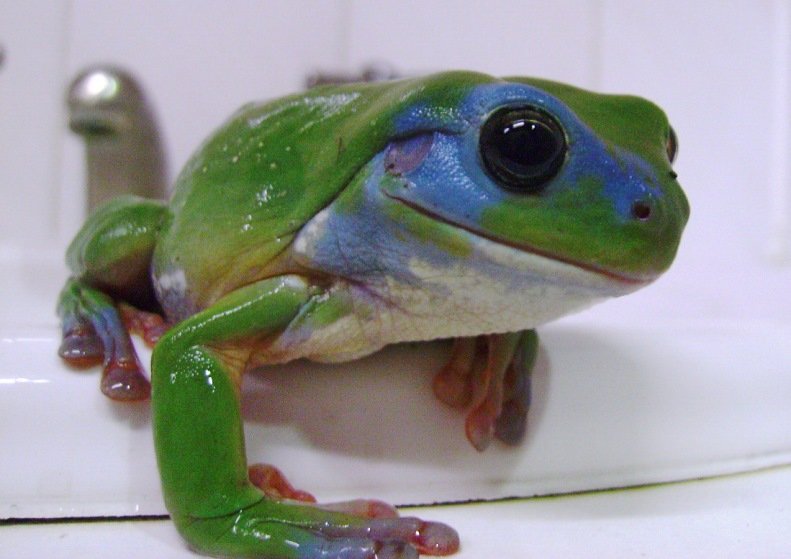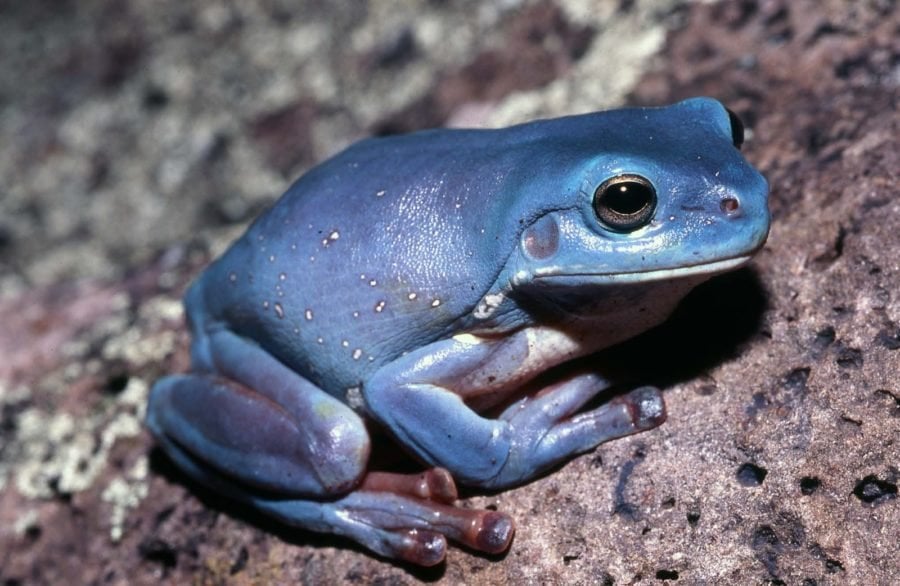Why would a green frog be blue?

Scientists at the Australian Museum would love to hear from you if you see one – like this not-entirely green tree frog in a photo sent in this week by Australian Geographic reader Craig Latta.
In fact, they’d love to see other pictures of other frogs with any sort of aberrant colouration.
We passed the image onto one of the museum’s frog experts, Dr Jodi Rowley, curator of amphibian and reptile conservation.
And even she was gobsmacked. After two decades of working closely with amphibians this was one of only a handful of images that Jodi had seen of a green tree frog with blue markings on its skin.
Many thousands of this species of frog – Litoria caerulea – are widely distributed up and down the east coast, from Victoria to Queensland, and across as far as northern Western Australia. And, almost without exception, they’re all green.
“Personally, with my own eyes, I’ve only ever seen one living frog with markings like that and that was a little mountain tree frog [another species],” Jodi told us.
“I would have certainly seen less than 10 photos of green tree frogs with those sorts of markings.”
She’s also seen a photo of a purple-coloured banjo frog, a species that usually has skin in mottled shades of browns and creams. “So, there are some really amazing aberrations, which I would love to see,” Jodi said.
So, if you’ve seen a green tree frog with blue marking on it – or any other weirdly coloured frog – send it to us and we’ll pass it on to Jodi.
She pointed out that sometimes you can also see albino green tree frogs – all white, with no pigmentation in their skin. Or occasionally a yellow green tree frog turns up.
“So instead of missing the yellow pigment, which is what happens when the skin turns blue, they’d be missing the blue pigment, which makes them yellow,” Jodi explained.
“I’d love to see any amazing unique frogs that are differently coloured. We’d be keen to see how widespread [these aberrant colourations] are.”
What’s the reason for the strange colours? That’s what Jodi would like to be able to find out.
She suspects they’re simply genetic mutations. And because green tree frogs are coloured green for a reason – to hide away from predators among leaves – their outlandish colouration sees them snapped up quickly by predators.
And that means blue or even yellow mutations rarely get a chance to be passed along to the next generation and persist in the general green tree frog population.
“So, I’ve seen photos of some that are completely blue, and I’ve seen a completely yellow one before in a photo,” Jodi said. “But these patchy blue ones are particularly special.”
Why would just one patch be unusually coloured?
It’s literally just “one of those things”, just like some people have an area on their skin where there’s extra or different pigmentation.


